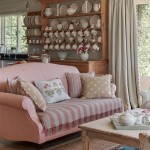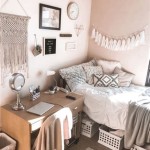Country Living Decorating Ideas: Embracing Warmth and Simplicity
Country living décor evokes a sense of comfort, nostalgia, and connection to nature. It's a style that prioritizes functionality and beauty, often incorporating vintage finds, handcrafted items, and natural materials. Achieving a cohesive country aesthetic involves more than just adding a few farmhouse-style signs. It requires a thoughtful approach to color palettes, furniture selection, and the incorporation of elements that tell a story.
This article explores essential aspects of country living decorating, providing insights into creating a space that feels both inviting and authentic. It delves into key elements that define the style, offering guidance on how to successfully integrate them into various rooms of the home. Consideration will be given to the nuances of different country sub-styles, ensuring a personalized and harmonious outcome.
Color Palettes: Grounding the Space in Nature
Color is fundamental to establishing the overall mood of a country-style interior. The most successful palettes often draw inspiration from the natural environment, utilizing muted tones and earthy hues. Avoid overly bright or jarring colors, as they can detract from the relaxed and organic feel that is characteristic of the style.
Neutrals form the foundation of a country color scheme. Creams, off-whites, beiges, and light grays provide a versatile backdrop that allows other elements to shine. Walls painted in these colors create a sense of spaciousness and allow for the layering of textures and patterns. These neutral backdrops also offer flexibility when incorporating vintage or repurposed items, which may have their own unique color variations.
Accent colors are crucial for adding depth and personality. Consider incorporating soft blues, greens, yellows, and reds. These colors should be used sparingly, perhaps in textiles, artwork, or decorative accessories. For example, a pale blue throw pillow on a cream-colored sofa or a vase filled with yellow wildflowers can introduce a touch of color without overwhelming the space.
The specific shade of the accent color also plays a role. Dusty blues and greens, rather than vibrant or neon shades, are more in keeping with the country aesthetic. These more subdued tones complement the natural materials and vintage elements that define the style. Think of the colors found in antique quilts or hand-painted pottery – these are excellent sources of inspiration.
Furthermore, the use of wood tones, which range from light pine to dark walnut, contributes significantly to the color palette. Wood furniture and architectural details, such as exposed beams or wainscoting, introduce warmth and texture. The natural grain of the wood adds visual interest and reinforces the connection to the outdoors.
Consider the different lighting conditions within the room when selecting colors. North-facing rooms tend to be cooler and may benefit from warmer tones, while south-facing rooms can handle cooler hues. Natural light should be maximized to enhance the colors and create a bright and inviting atmosphere.
Furniture: Embracing Comfort and Timeless Design
Furniture selection is paramount in establishing a country living aesthetic. The focus should be on pieces that are comfortable, durable, and possess a sense of history. Avoid sleek, modern furniture with sharp edges and minimalist designs. Instead, opt for pieces with softer lines, natural materials, and a slightly worn or antique appearance.
Upholstered furniture should be comfortable and inviting. Sofas and armchairs with plush cushions and durable fabrics, such as linen, cotton, or wool, are ideal. Consider slipcovered furniture, which can be easily removed and washed, making it a practical choice for a country home. Patterns, such as floral prints, checks, or stripes, can add character and visual interest, but should be used judiciously to avoid overwhelming the space.
Wood furniture is a cornerstone of country décor. Look for pieces crafted from solid wood, such as pine, oak, or maple. Distressed finishes, such as painted and sanded wood or pieces with visible grain, add to the rustic charm. Antique or vintage furniture, such as farmhouse tables, dressers, and sideboards, can be incorporated to create a sense of history and character.
Repurposed furniture is another key element of country style. Consider using an old workbench as a kitchen island or converting a vintage trunk into a coffee table. These repurposed pieces add a unique touch and demonstrate a commitment to sustainability and resourcefulness.
Metal accents can also be incorporated, but they should be used sparingly. Wrought iron lighting fixtures, metal hardware on furniture, or galvanized metal containers can add a touch of industrial charm. However, avoid using too much stainless steel or chrome, as these materials tend to be too modern for a country-style interior.
The scale of the furniture should be appropriate for the size of the room. Avoid overcrowding a small space with large, bulky pieces. Instead, opt for furniture that is proportional to the room's dimensions and allows for easy movement. Consider the placement of furniture to create comfortable seating areas and facilitate conversation.
Mix and match different styles of furniture to create a more eclectic and personal look. Combine antique pieces with more modern pieces, but ensure that all of the furniture shares a common thread, such as color, material, or style. This will help to create a cohesive and harmonious space.
Textiles and Accessories: Layering Texture and Personality
Textiles and accessories are essential for adding texture, pattern, and personality to a country-style interior. These elements provide opportunities to express personal style and create a warm and inviting atmosphere. Focus on incorporating items that are handcrafted, vintage, or have a sentimental value.
Rugs are essential for defining spaces and adding warmth underfoot. Area rugs made from natural fibers, such as wool, jute, or sisal, are ideal for a country home. Consider using vintage rugs or braided rugs to add character and texture. The size of the rug should be proportional to the size of the room and should be placed strategically to define seating areas or walkways.
Curtains and window treatments can significantly impact the overall look and feel of a room. Opt for lightweight fabrics, such as linen or cotton, that allow natural light to filter through. Simple patterns, such as floral prints, checks, or stripes, can add a touch of charm. Avoid heavy drapes or overly elaborate window treatments, as they can detract from the relaxed and informal atmosphere.
Pillows and throws are essential for adding comfort and texture to sofas, armchairs, and beds. Mix and match different sizes, shapes, and patterns to create a layered and inviting look. Consider using pillows and throws made from natural fibers, such as wool, cotton, or linen. Handmade quilts or knitted throws can add a touch of warmth and personality.
Decorative accessories, such as vases, candles, baskets, and artwork, provide opportunities to express personal style and add visual interest. Look for items that are handcrafted, vintage, or have a sentimental value. Arrange these accessories in groupings to create vignettes that are both visually appealing and meaningful. Consider incorporating natural elements, such as branches, pinecones, or seashells, to bring the outdoors in.
Artwork should be carefully selected to complement the overall style of the room. Consider using landscape paintings, botanical prints, or vintage photographs. Frame the artwork in simple wooden frames to maintain the rustic feel. Avoid overly abstract or modern artwork, as it can clash with the country aesthetic.
Lighting fixtures can also contribute to the overall style of the room. Wrought iron chandeliers, sconces, or table lamps can add a touch of rustic charm. Consider using vintage or antique lighting fixtures to create a sense of history. Ensure that the lighting is adequate for the room's function and that it creates a warm and inviting atmosphere.
Plants and flowers are essential for bringing life and freshness to a country home. Consider using potted plants, such as herbs, ferns, or succulents, to add a touch of greenery. Arrange fresh flowers in vases or pitchers to create a cheerful and welcoming atmosphere. Consider using wildflowers or flowers from your own garden to add a personal touch.
Ultimately, successful country living decorating is about creating a space that feels authentic, comfortable, and personal. By carefully considering color palettes, furniture selection, and the incorporation of textiles and accessories, it is possible to achieve a warm and inviting home that reflects a love of nature, history, and simple living. The key is to prioritize quality over quantity, to embrace imperfection, and to create a space that tells a story.

30 Perfect Farmhouse Living Room Design Ideas Country French Decorating

100 Living Room Decorating Ideas Design Photos Of Family Rooms

7 Country Living Room Decor Ideas You Ll Love

25 Rustic Living Room Ideas Modern Decor And Furniture

Country Living Room Ideas House Garden

Winter Decor Around Our Home Country Cottage Living Room Farmhouse Farm House

Country Living Room Ideas 40 Chic Rustic Interior Looks Displate Blog

100 Living Room Decorating Ideas Design Photos Of Family Rooms

Country Living Room Ideas House Garden

18 French Country Living Room Ideas That Will Make You Swoon Hunker
Related Posts







